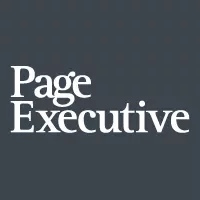How Leadership Can Embrace Diversity of Thought in the Workplace



The conversation around diversity, equity, and inclusion (DEI) has evolved over the last few years. As a result, these topics have moved into the center of corporate discourse. So, it is now at the top of the agenda for leaders.
For leadership teams looking to enhance commercial performance, a particular element of the DEI discussion has become especially important: diversity of thought. In this article, we’ll discuss what diversity of thought is, and why it should constitute a key pillar of your hiring strategy.
In a workplace context, diversity of thought refers to the range of mindsets, thought processes, and perspectives that can be found within an organization’s workforce. It is not merely a part of an effective DEI strategy - it is, in many ways, the direct result of an effective DEI strategy.
Diversity in areas like gender, ethnicity, LGBTQ+, age, socio-economic background, caring responsibilities, disability, and mental health broaden the range of perspectives within an organization. This often directly benefits commercial performance by involving individuals with varied skillsets and backgrounds in decision-making. It also increases the likelihood that an organization will have staff capable of meeting unexpected challenges.
The benefits associated with diversity of thought are especially notable at the leadership level, where excessive homogeneity can result in less rigorous ideation and troubleshooting, stifling innovation, and leaving critical blind spots. For example, a 2019 McKinsey analysis found that organizations in the top quartile for gender diversity on executive teams were a full 25 percent more likely to achieve above-average profitability than companies in the fourth quartile.
Here at Page Executive, our experience working with clients suggests that target-setting should not be the extent of your company’s focus when it comes to diversity and inclusion if you want to truly benefit from diversity of thought. The key is to make your hiring process more accessible and move potential roadblocks that may exist in the application and interview processes.
A more impactful way to approach hiring is to focus on what candidates will bring to your company precisely because they do not fit the standard template for a prospective candidate. By moving beyond the ‘box-ticking’ approach to diversity in hiring, your business will not only become more diverse – it will become more innovative, more profitable, and better able to confront market challenges.
Of course, the organization itself must support this goal. This means not only empowering staff to hire outside their zone of familiarity, but also proactively equipping hiring managers with the tools, resources, and training to manage, engage, motivate, and retain diverse staff. This, ultimately, will play a major role in creating diversity of thought.
All businesses are different and have varying weaknesses when it comes to DEI. This makes it truly essential that businesses lead with an analysis of their own limitations. Which perspectives are you missing in your workforce and leadership team? Are there any parts of your customer base that your organization currently does not resemble or adequately represent at the highest levels?
These areas are not only the ones in which your company is lacking – they are also the ones in which your company has the most to gain in customer traction and growth. Diversity is, in effect, a tool to help your business grow and thrive.
Given this, it is essential that business leaders consider the ways in which their company’s hiring processes may be excluding valuable talent and holding back performance. Non-inclusive cultures have an impact at the earliest stages of the hiring journey, with the language used in job advertisements. At Page Executive, we work closely with organizations to drive growth and performance through our tailored talent solutions, developing deep knowledge of each client’s unique needs. We see again and again that self-analysis is a crucial element of developing and benefiting from diversity of thought and would therefore suggest this as a starting point.
Achieving true diversity of thought in your business will bring huge benefits, but it is also a complex challenge. If you want to make sure that your hiring plans are attracting the talent you need, reach out here to set up an introductory conversation with one of our expert consultants.
Register to download report

